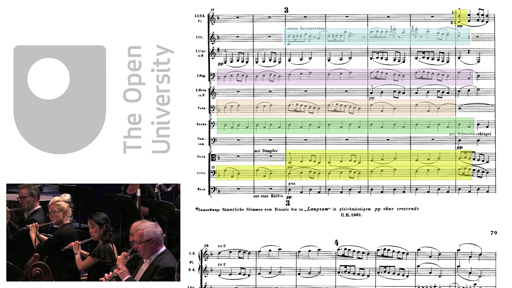4.2.2 Keeping track - Mahler Symphony No.1, third movement

In the previous section, you should have examined and marked up the score of Mahler’s Symphony No. 1. Watch the video of the third movement of Mahler’s Symphony No. 1, listening to the orchestra while following the score on screen.
Having watched the video of the rolling score, download the PDF [Tip: hold Ctrl and click a link to open it in a new tab. (Hide tip)] of the full unannotated score. Mark up your score as you did for the Arabian dance, using blue for dynamic markings and red for those important melodies. If you want to highlight a particular instrument, choose a different colour to pick it out. Then listen to the audio and follow your marked-up score. Remember, there may be more than one system on a page. This is exactly what happens at the beginning, so try to remember what instrument is playing the part that you are following most closely and keep an eye on where that line moves to on the page. Keep thinking about the kind of landmark that we have already discussed that can help orientate your eyes – look out for double bars, areas of rests, and changes in how the music looks that might indicate ‘layers’ of sound and so on.
